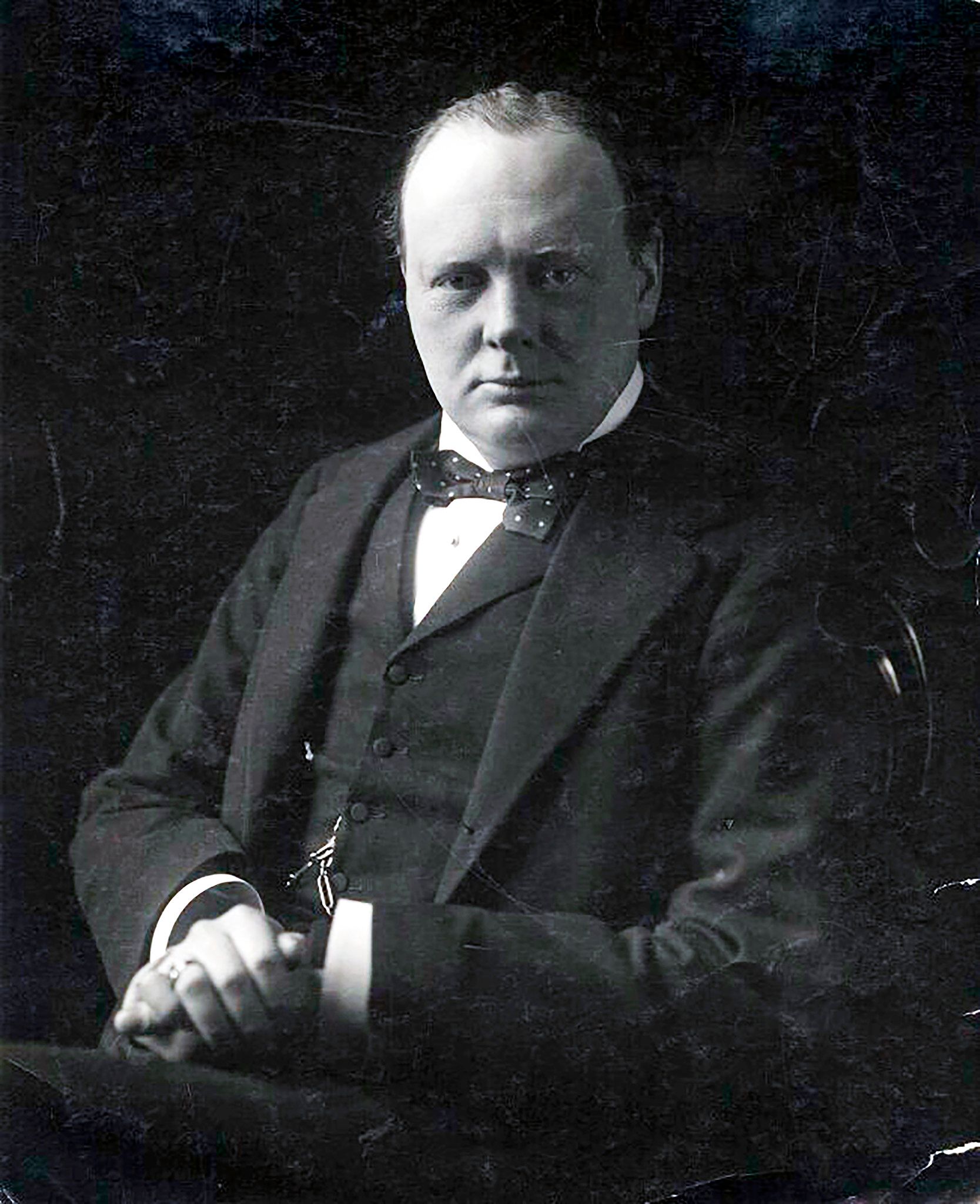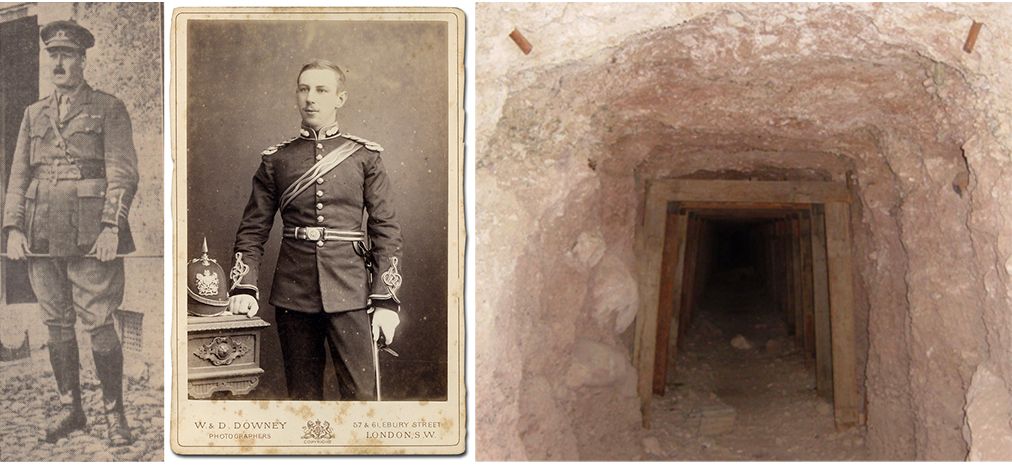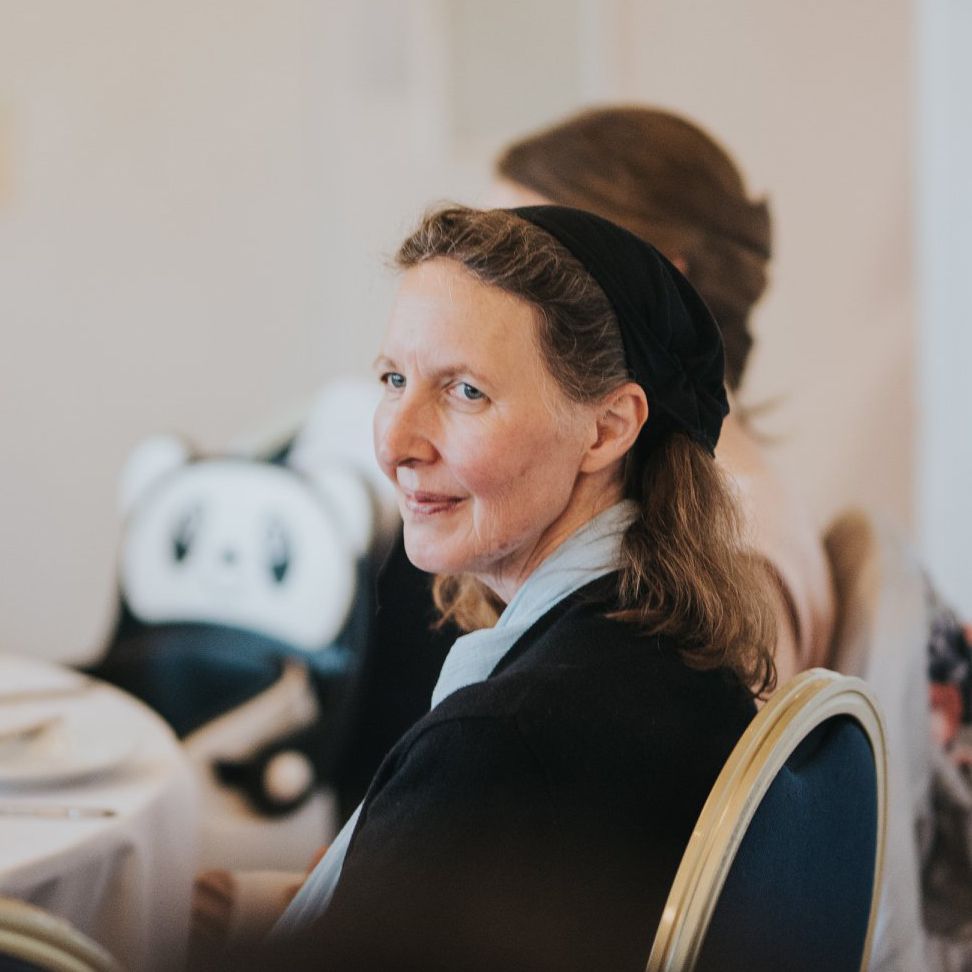The Plan
Several prominent IRA volunteers had been captured by the British, and Sinn Fein wanted to get them released. A plan was devised to kidnap a senior British army officer and exchange him for the Irish captives. George Powers (Adjutant and Intelligence Officer, Fermoy Company Irish Volunteers), was in on this plan:
At this time, Michael Fitzgerald,* who was now O.C. of the Fermoy Battalion, was in Cork jail, having been arrested for his connection with the Fermoy attack. He was on hunger-strike as a protest against his detention without trial for many weeks. Realising that Fitzgerald would probably die as a result of this hunger-strike, the brigade decided to capture the most senior of the British officers in Fermoy and to hold him as a hostage for Fitzgerald. A close watch was kept on the movements of the senior officers of the British garrison in Fermoy by the local Volunteer Intelligence officers. Daily, and even more frequently,
Intelligence reports were made to the Brigade by these officers.
BUREAU OF MILITARY HISTORY,1913-21 WITNESS DOCUMENT NO. W.S. 451 Witness Captain George Power
*Michael Fitzgerald also known as Mick Fitzgerald, (December 1881 – 17 October 1920) was among the first members of the Irish Republican Army and played an important role in organizing it. He rose to the rank of Commandant OC in the First Battalion, Cork Number 2 Brigade. He died in the 1920 hunger strike at Cork Gaol. His death is credited with bringing world-wide attention to the Irish cause for independence. Source

Liam Lynch was very close to Michael Fitzgerald and desperately wanted his friend freed. When Lynch was dying he requested that he be buried alongside Fitzgerald.
Laurence Condon, who was Second Lieut. Fermoy Company, was the Intelligence officer who came up with the vital information they were searching for:
I was concerned in the plan for the capture of Brigadier-General Lucas. Moss Twomey was sent by Liam Lynch to enquire about him but could get no information and was astonished when I told him I had been talking to him one morning on the road to Kilbarry, where I passed him pumping a bicycle on the side of the road and he was speaking to me. He was about 6 ft. 2 ins. and was certainly a fine looking man. Moss Twomey asked me to find out something about his movements as Lynch intended to try and capture him and hold him as a hostage against I.R.A. prisoners with the British.
That evening I went over to Liam Tobin at Neill's and heard that Lucas was going fishing with old Tom Neill the following Saturday and would be at the lodge along the Blackwater at such and such a time. Twomey brought the news to Lynch and when the day came Lynch, with Seán Moylan, Paddy Clancy and George Power, arrived in two cars and with Curtin as one driver and another driver on the second car. We supplied Curtin and one car.
BUREAU OF MILITARY HISTORY, 1913-21. STATEMENT BY WITNESS. DOCUMENT No. W.S. 859 Witness Laurence Condon
So the scene was set. Already the IRA were beginning to realise that CHTL wasn’t a stereo-typical British general. Riding a bicycle and chatting to strangers wasn’t what they expected. Oblivious to all this, back in London Churchill and Wilson were still debating whether war should be declared on the IRA.
Churchill to Wilson (25.6.20)
Private and Secret
I do not think it is any use simply saying that the Government should "declare war on Sinn Fein and act accordingly'', unless you show by a series of definite illustrations the kind of measures you think should be adopted. It is in this field of practical suggestions that your military knowledge would be of the utmost advantage, whereas, so long as you confine yourself to generalities, it is impossible for me to carry the matter any further.
I suggest you should draw up a paper showing exactly the kind of military regime appropriate to a state of war which you recommend should be enforced in Ireland, or in such parts of Ireland as were specially disturbed, with definite detailed illustrations of the kind of thing which would be done under this regime which cannot be done under the present Defence of the Realm Act.*
I have now become a member of the Cabinet Committee specially charged with the duty of watching over Irish affairs and suppression of crime and disorder in Ireland. Therefore I shall be in a position to bring any recommendations you may make to the notice of this Committee** at the earliest moment.
It is no use, for instance, answering the question, 'What would you do in Ireland', by saying 'I should shoot', or 'I should shoot without hesitation', or 'I should shoot without mercy'. The enquiry immediately arises 'Whom would you shoot?'. And shortly after that 'Where are they?' 'How are you going to recognise them?'. If by acting as if a state of war existed you mean that an incident such as that which occurred at Ennis should be followed by burning down a dozen houses or by shooting a certain number of inhabitants, drawn by a lot or otherwise, you should say so plainly so that the matter may be considered. Then if your suggestions are not adopted by superior authority, you will at any rate have left them in doubt of what your views are. Everyone knows that the situation in Ireland is unsatisfactory, that it is bad for the troops and full of potential dangers for this country.
I do not myself believe it would be better by the kind of methods the Prussians adopted in Belgium, but if you think so you ought to say so...
Winston Churchill, 1920
*Under the Defence of the Realm Act during 1918-19 'Special military Areas' had been established in parts of south-west Ireland. Within them the local military commander had powers to impose extensive restrictions, but by the autumn of 1919 their effectiveness was being questioned. Townsend, The British Campaign in Ireland, pp. 7 -8, 11, 23, 25, 31.
**The Irish Situation Committee was set up on 24 June. Chaired by Walter Long, it included A.J. Balfour, Lord Birkenhead, Churchill and H.A.L. Fisher (President of the Board of Education), Cabinet Minutes, PRO CAB.23/21/37(20)

A few days later a frustrated Wilson replied:
Wilson to Churchill (28.6.20)
I am not quite sure that I understand your minute. Do you wish me to give you my views on how to govern Ireland? This, being political, is a subject outside my province…
p180 - 182 The Military Correspondence of Field Marshall Sir Henry Wilson 1918 - 1922 Ed Keith Jeffery The Bodley Head 1985
Danford and Tyrrell
Stationed at Fermoy with CHTL were Colonels Danford and Tyrrell who joined CHTL on his infamous fishing trip. Not much is known about Tyrrell. The IRA witness statement given by Laurence Cordon, appears to have muddled the two Colonels up by saying that it was Tyrrell who was in the Royal Engineers and Danford who was in the Royal Artillery. There are no records of Tyrell being in the R.E. As far as we have been able to find out Tyrrell had served in the Royal Artillery in India and came from Paignton in Devon.
There is a record of a Major J.F. Tyrell being mentioned in dispatches in 1915:
Major J. F. Tyrrell, R.A., for meritorious service as Deputy Assistant Director of Ordnance Supplies. Mentioned in dispatches whilst serving with Force D of the Indian Expeditionary Force on the Euphrates in 1915.
CHTL had served in India from September 1909 to October 1910, so it is possible that the men met there. Danford had served in Egypt with CHTL and the two were old friends.

Bertram William Young Danford was born on 6th June 1875. He was commissioned as second Lieutenant, Royal Engineers, on 17th of August 1894, becomingly Lieutenant in August 1897 and Captain in April 1904. He served in Egypt from 1905 to 1910.
During World War I Danford took command of the newly formed 174th tunnelling company in March 1915. The group's work was at first to keep the German miners at bay, but this still meant that they were under attack. In May 1915, in the Ploegsteert sector, one such attack saw nine British miners trapped underground. Danford immediately set about organising the miners rescue by working men on the surface at great pressure in short shifts. The armoured hosepipe that supplied air was not damaged so this meant that not only did the men received air but that Danford could keep up their morale by speaking down it. He encouraged the trapped men by describing how hard their comrades were working to release them and so goaded them into working from their end to free themselves. After 36 hours all the men were freed, suffering little more than hunger and fatigue. After a nights sleep the men were back working in the tunnels.
Danford and the tunnelling company moved to Bray on 24 July 1915, when it took over 66 shafts from the French. This was on the Somme front and where the Germans were particularly active; constantly firing at the Allies shafts and galleries and succeeding in destroying many of them.
Danford was promoted to being the ‘Controller of Mines’ on 1st January 1916. In May of that year he was seriously injured in a car accident, fracturing his elbow in three places and therefore missed the main Battle of the Somme as he was away from the frontline for three months.
On 1st January 1918, Danford was made brevet Lieutenant- Colonel and in April of that year was appointed A.Q.M.G. (Assistant Quartermaster General) and Class X Assistant Inspector of Mines, British Army in France. He was mentioned four times in dispatches and received a D.S.O. (Distinguished Service Order) medal for his services in France.
After the Armistice, Danford was sent to Ireland as C.R.E. (Commander Royal Engineers) 16th Infantry Brigade. This is where he met up again with CHTL.
Danford was a tough determined soldier, as displayed in France, he was not one to give up easily. This trait led to him almost losing his life in Ireland when he refused to surrender whilst attempting to escape from the IRA.
Danford had the nickname ‘Dirty Dan’ as he had a collection of crude stories. No doubt CHTL enjoyed his company and he was an obvious choice to invite along on the fishing trip.
Colonel Tyrrell doesn't appear to have had any direct direct connection to CHTL previous to his time in Ireland, other than they may have met in India. The two enjoyed playing tennis together in Ireland. From CHTL’s letter to Poppy, it seems that Danford had been originally invited on the fishing trip, he had already been out fishing with CHTL and possibly Tyrrell was a last-minute addition to the party.
